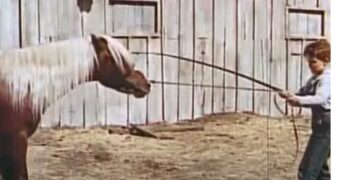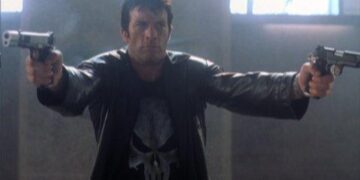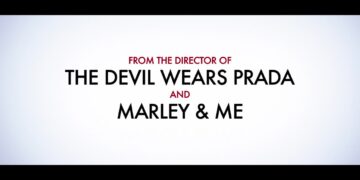When it comes to classic comic strips, few have captured the hearts and imaginations of readers quite like Blondie.
Created by Chic Young in 1930, this timeless comic has entertained generations with its relatable humor and charming characters.
In this article, we’ll explore Blondie Goes Latin, a film adaptation of the comic strip that adds a dash of Latin flavor to the beloved series.
From the movie summary and character breakdowns to behind-the-scenes curiosities and similar media, we’ll delve into the world of Blondie Goes Latin and discover what makes it a standout entry in the long-running Blondie series.
Comic and movie summary
Blondie Goes Latin is a 1941 American comedy film directed by Frank R. Strayer and produced by Robert Sparks.
The movie is the ninth installment in the Blondie film series, a collection of 28 films based on the comic strip by Chic Young.
The film follows the adventures of Blondie Bumstead, played by Penny Singleton, and her husband Dagwood, portrayed by Arthur Lake, as they embark on a cruise to Latin America.
The Bumsteads’ vacation takes an unexpected turn when they become entangled in a series of comedic misunderstandings and misadventures, all set against the vibrant backdrop of Latin American culture.
As the couple navigates their way through the chaos, they must rely on their wits, resourcefulness, and each other to find their way back to the ship and bring their adventure to a happy conclusion.
Parent guide and when Blondie Goes Latin takes place
Blondie Goes Latin is a family-friendly film that offers wholesome entertainment for viewers of all ages.
The movie’s humor is lighthearted and clean, making it an ideal choice for parents seeking a fun and engaging option for family movie night. Set in the early 1940s, the film reflects the prevailing attitudes and sensibilities of its time, providing a fascinating glimpse into a bygone era.
The film’s setting in Latin America offers a colorful and dynamic backdrop for the Bumsteads’ adventures, immersing viewers in a world of lively music, dance, and culture. As the story unfolds, audiences are treated to a captivating journey through the region’s rich history and traditions, making Blondie Goes Latin not only a delightful comedy but an educational experience as well.
Film locations and behind-the-scenes curiosities
Although Blondie Goes Latin is set in various Latin American locales, filming took place primarily in California.
The film’s production team transformed various locations around the state into convincing stand-ins for the exotic settings depicted in the story, showcasing the creative ingenuity of Hollywood’s Golden Age.
Behind the scenes, Blondie Goes Latin is notable for its talented cast and crew, many of whom were associated with the larger Blondie film series.
Director Frank R. Strayer, known for his work in the comedy genre, brought his signature blend of wit and charm to the project, while producer Robert Sparks ensured that the film stayed true to the spirit of Chic Young’s original comic strip.
The result is a movie that seamlessly combines the best elements of both the comic and film worlds, making Blondie Goes Latin a standout entry in the Blondie series.
Who’s who: Character breakdown
Blondie Goes Latin features an ensemble cast of memorable characters, each contributing to the film’s unique blend of humor and heart. Here’s a brief overview of the main players in the story:
- Blondie Bumstead: The film’s titular heroine, Blondie is a loving wife and mother with a knack for getting herself and her family into hilarious predicaments. Played by Penny Singleton, Blondie’s charm and resourcefulness shine through in every scene, making her the heart and soul of the story.
- Dagwood Bumstead: Blondie’s devoted husband, Dagwood is a well-meaning but somewhat bumbling individual who often finds himself caught up in his wife’s misadventures. Portrayed by Arthur Lake, Dagwood’s endearing personality and unwavering loyalty to Blondie make him a beloved character in the Blondie series.
- Baby Dumpling: The Bumsteads’ young son, Baby Dumpling (later known as Alexander) is a precocious and imaginative child who adds his own brand of humor to the family’s antics. Larry Simms brings the character to life with a delightful performance that captures the spirit of Chic Young’s original creation.
- Mr. Dithers: Dagwood’s boss and a recurring character in the Blondie series, Mr. Dithers is a gruff but lovable figure who often finds himself at the center of the Bumsteads’ escapades. Played by Jonathan Hale, Mr. Dithers adds an extra layer of comedy and conflict to the story.
Other notable characters in Blondie Goes Latin include the ship’s captain, various passengers, and an assortment of colorful Latin American locals, each contributing to the film’s rich tapestry of personalities and comedic situations.
Memorable quotes from Blondie Goes Latin
Blondie Goes Latin is filled with witty dialogue and memorable lines that capture the essence of the comic strip’s humor. Here are just a few standout quotes from the film:
- “How can you have so much trouble with such a little suitcase?” – Blondie, to Dagwood as they struggle to pack for their trip.
- “I don’t know what I’d do without you, Blondie. You’re my rudder, my compass, my anchor, and my sail!” – Dagwood, expressing his love and admiration for his wife.
- “I’ve got a hunch this is going to be some cruise!” – Mr. Dithers, foreshadowing the comedic chaos to come.
- “If this is Latin America, I’m a monkey’s uncle!” – Dagwood, upon finding himself in an unexpected location.
These quotes and many others showcase the film’s sharp writing and the actors’ impeccable comic timing, making Blondie Goes Latin a treasure trove of quotable moments.
Soundtrack by Leo Arnaud and Conga Swing
The soundtrack of Blondie Goes Latin, composed by Leo Arnaud, adds a lively and infectious energy to the film.
Drawing from a variety of Latin American musical styles, the score transports audiences to the vibrant and exotic world of the Bumsteads’ adventure. One standout track is “Conga Swing,” a catchy and upbeat tune that perfectly encapsulates the film’s spirited atmosphere.
Arnaud’s skillful compositions not only complement the story’s setting but also enhance the film’s comedic moments, making the soundtrack an integral part of the Blondie Goes Latin experience.
Chic Young: Creator bio and works
Chic Young, born Murat Bernard Young in 1901, was an American cartoonist best known for creating the long-running comic strip Blondie. Young began his career as a cartoonist in the 1920s, working on various strips and creating several of his own before finding success with Blondie in 1930.
The comic quickly gained popularity for its relatable humor and endearing characters, eventually spawning a successful film series, radio show, and numerous adaptations.
In addition to Blondie, Young created several other comic strips, including Dumb Dora and The Affairs of Jane.
Despite the success of these other works, it is Blondie that remains Young’s most enduring and beloved creation. Young continued to draw the strip until his death in 1973, leaving behind a legacy of laughter and entertainment that continues to delight audiences today.
Tips for cosplay and dressing like the characters
For fans looking to emulate the style of Blondie Goes Latin’s characters, there are several key elements to consider. Dressing like Blondie and Dagwood requires a nod to the 1940s fashion, as well as incorporating some of their signature wardrobe items:
- Blondie: To capture Blondie’s look, consider a vintage-inspired dress with a floral or polka dot pattern, paired with classic pumps and a string of pearls. Complete the ensemble with a blonde wig styled in Blondie’s iconic flipped bob.
- Dagwood: To dress like Dagwood, opt for a tailored suit with a vest and a fedora hat. Accessorize with a vintage tie and a pair of two-tone wingtip shoes. Don’t forget to add a sandwich prop as a nod to Dagwood’s love of food!
When it comes to embracing the Latin American flair of the film, consider incorporating elements such as colorful clothing, tropical prints, and accessories like maracas or flower hair clips. These touches will help evoke the movie’s vibrant atmosphere and make for a fun and festive cosplay experience.
Exploring the Blondie series and other works by Frank R. Strayer and Robert Sparks
Blondie Goes Latin is just one of many films in the Blondie series, which spans 28 movies released between 1938 and 1950.
Fans of Blondie Goes Latin may enjoy exploring the other films in the series, each offering its own unique blend of comedy and heart. Some standout titles include Blondie Meets the Boss, Blondie Brings Up Baby, and Blondie’s Big Moment.
In addition to the Blondie series, director Frank R. Strayer and producer Robert Sparks collaborated on numerous other projects, often with a focus on comedy. Strayer’s filmography includes titles such as The Ghost Walks and The Vampire Bat, while Sparks produced films like The Lady Objects and The Devil’s Party. These works showcase the duo’s versatility and skill in the realm of filmmaking, making them worth checking out for fans of Blondie Goes Latin.
Similar media to Blondie Goes Latin and other works by Chic Young
For those seeking similar media to Blondie Goes Latin, there are plenty of options to choose from. In the realm of comic strips, works like Gasoline Alley, Bringing Up Father, and The Family Circus offer a similar blend of humor and heart. Fans of the Blondie film series may also enjoy other classic comedy films, such as The Thin Man series or My Man Godfrey.
In terms of other works by Chic Young, readers can explore the comic strips Dumb Dora and The Affairs of Jane, both of which showcase Young’s signature wit and charm. Additionally, fans of Blondie may enjoy the radio show based on the comic, which aired from 1939 to 1950 and featured many of the same beloved characters.
The ending explained: Remakes, sequels, and spin-offs
Blondie Goes Latin concludes with the Bumsteads’ vacation coming to a close, as the couple successfully navigates their way through their various misadventures and returns home. As a standalone film in the Blondie series, Blondie Goes Latin does not have any direct sequels or spin-offs. However, the larger Blondie film series continued after Blondie Goes Latin, with several more movies released over the years.
While there have not been any remakes of Blondie Goes Latin, the enduring popularity of the Blondie comic strip has led to numerous adaptations and reinterpretations of the characters and stories. These include a 1980 TV movie, a 1995 animated special, and even a stage musical.
Blondie Goes Latin in other forms of media: Video games and adaptations
While Blondie Goes Latin has not been directly adapted into a video game, the characters and world of Blondie have made their way into various forms of media over the years. From the aforementioned radio show and animated specials to a series of novels and even a pinball machine, Blondie’s legacy continues to thrive in numerous formats.
Fans of Blondie looking for a video game experience may want to check out classic arcade games with a similar aesthetic or comedic tone, such as Popeye or Tapper.
Travel guide to visit Blondie Goes Latin filming locations
While the exotic locales depicted in Blondie Goes Latin were primarily created on Hollywood soundstages, fans looking to visit filming locations can explore the various California sites used in the production.
From the lush scenery of Griffith Park to the historic streets of downtown Los Angeles, there are numerous spots throughout the state that evoke the atmosphere of the film.
To truly immerse yourself in the world of Blondie Goes Latin, consider planning a trip to Latin America, where you can explore the vibrant culture, history, and traditions that inspired the film’s setting.
Book club questions and discussion topics
Blondie Goes Latin offers a wealth of material for discussion, making it a great choice for book clubs, film clubs, or other group settings. Here are some questions and topics to consider when discussing the film:
- How does Blondie Goes Latin compare to other films in the Blondie series? What sets it apart from its predecessors and successors?
- What aspects of Latin American culture are showcased in the film, and how do they contribute to the story and atmosphere?
- How do the characters of Blondie and Dagwood embody the spirit of Chic Young’s original comic strip? In what ways do they differ from their comic counterparts?
- What role does humor play in Blondie Goes Latin, and how does it serve to enhance both the story and the characters?
- How do the film’s setting and production design contribute to its overall charm and appeal?
Conclusion
Blondie Goes Latin is a delightful and entertaining entry in the long-running Blondie series, offering fans a unique blend of comedy, adventure, and Latin American flair. With its engaging story, memorable characters, and vibrant atmosphere, the film remains a beloved classic that continues to charm audiences today. Whether you’re a longtime fan of the Blondie comic strip or a newcomer looking to explore the world of Blondie Goes Latin, this comprehensive guide offers a wealth of information and insights to enhance your appreciation of this timeless film.














